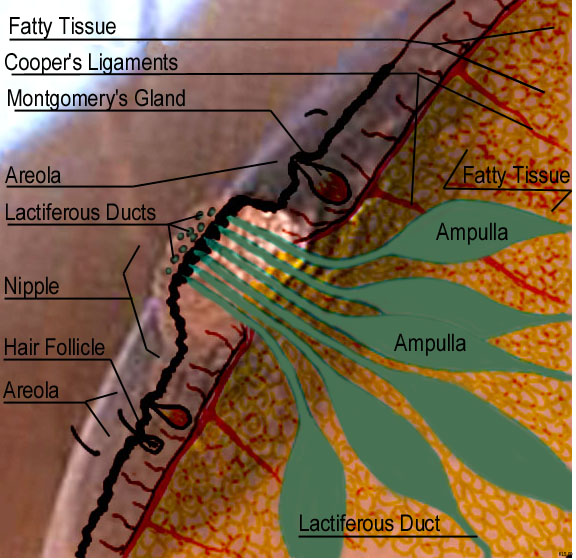|
 Montgomery's Glands (Areolar Glands) Montgomery's Glands (Areolar Glands)
These are those small nodules that look and function like extra large
"goose bumps". They are sebaceous glands that secrete a waxy, lipoid fluid
to lubricate, moisturize and protect the areola and the nipple. Stimulation
causes them to become more prominent.
Nipple (Papilla)
The nipple contains an opening (pore or duct) that is the terminus of
each Lactiferous Duct. There are actually 5 to 25 openings in the nipple,
through which breast milk is expressed. The nipple might be prominent (sticks
out away from the areola), flat (is flush with the areola), or inverted
(actually folds inwardly, into the areola). Stimulation (cold, fear, sexual
excitement, direct contact, etc.) usually causes the nipple to become
erect.
Hair Follicles
Our bodies have hair just about anywhere there is skin. Breasts are not
exempt. The hair seems to be more prominent on or near the areola. Some
hair is less visible because it is very light in color and texture.
Areola (Areola Mammae) (Areola Papillaris)
This special skin is pigmented and surrounds the nipple. It contains the
Areolar (Montgomery's) Glands, hair follicles and the Nipple. It is
often darker than
the surrounding skin, but this varies over a large range of intensity
depending upon the person's genetic background. The areolae often get darker and larger in diameter
during pregnancy and lactation, being one of the earliest indications of
a pregnancy.

|
